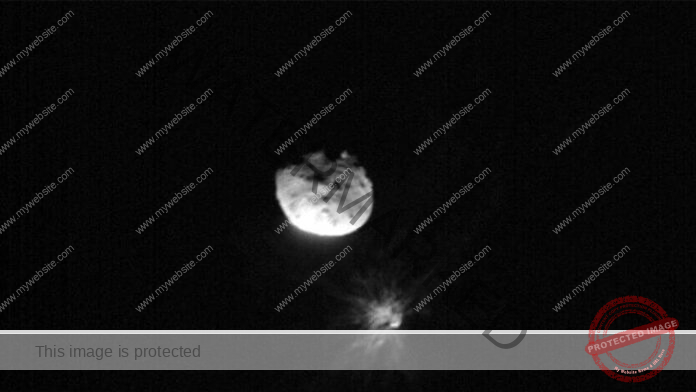A once in a lifetime experience, our Moon has some company, albeit a miniature version, and that to for just a couple months around. Scientists say that the miniature version or the mini moon is actually a asteroid, 37 feet wide, about the size of a big truck.
When it whizzed by Earth on Sunday (September 29, 2024), it was temporarily trapped by our planet’s gravity and would continue to orbit the globe for nearly couple of months.
The asteroid known as 2024 – PT5, was first spotted on August 7 using the NASA-funded Asteroid Terrestrial-impact Last Alert System (ATLAS) located at the Haleakala Observatory on the island of Maui, Hawaii.
Mini-moons are asteroids which have been pulled by the Earth’s gravity into orbit around the planet and remain there until they become dislodged and move away again. The length of stay of these mini-moons in orbit depends on speed and trajectory with which they approach the Earth.
As per scientists, this mini moon belongs to the Arjuna asteroid belt, a secondary asteroid belt made of space rocks that follow orbits very similar to that of Earth at an average distance to the sun of about 93 million miles (150 million kilometers).
According to a study published in Swiss journal, most mini-moons come towards Earth from the asteroid belt between Mars and Jupiter.
Further, unlike Earth’s permanent moon, mini-moons do not have stable orbits. Instead, they embark on a ‘horseshoe’ orbit path as a result of the asteroids being constantly pulled forwards and backwards by the gravity of Earth.
While Earth’s primary companion, the moon, has lingered around our planet for around 4 billion years since its formation in the solar system’s infancy, this asteroid will be a temporary fixture that won’t even be there for the year end.
As per calculations made by astronomers, the mini-moon will complete a trajectory around the Earth between September 29 and November 25, before ultimately breaking free from Earth’s gravitational pull and heading into space.
As per scientist, this mini moon won’t be visible to the naked eye or through amateur telescopes, but with relatively large professional grade telescopes, meant for research assignments, able to grab us some images of this temporary alignment.
This is mostly due to the massive difference in size between the two bodies. While the moon is an estimated 2,159 miles (3,475 km) in diameter, 2024 PT5 is believed to be just 37 feet wide. That means the moon is a whopping 308,108 times wider than the lunar pretender asteroid 2024 PT5.




























